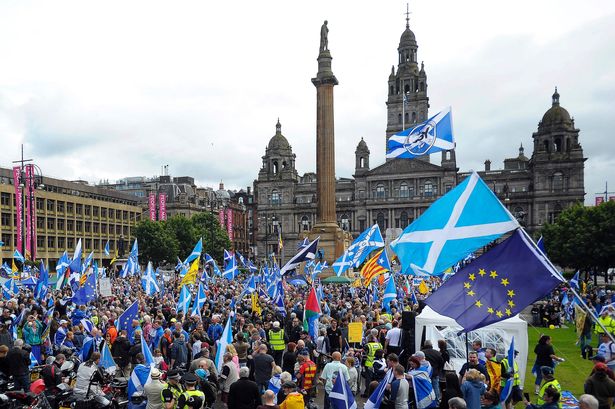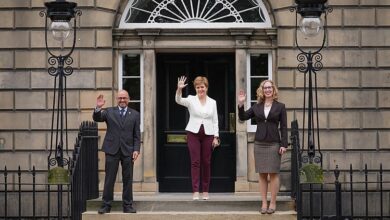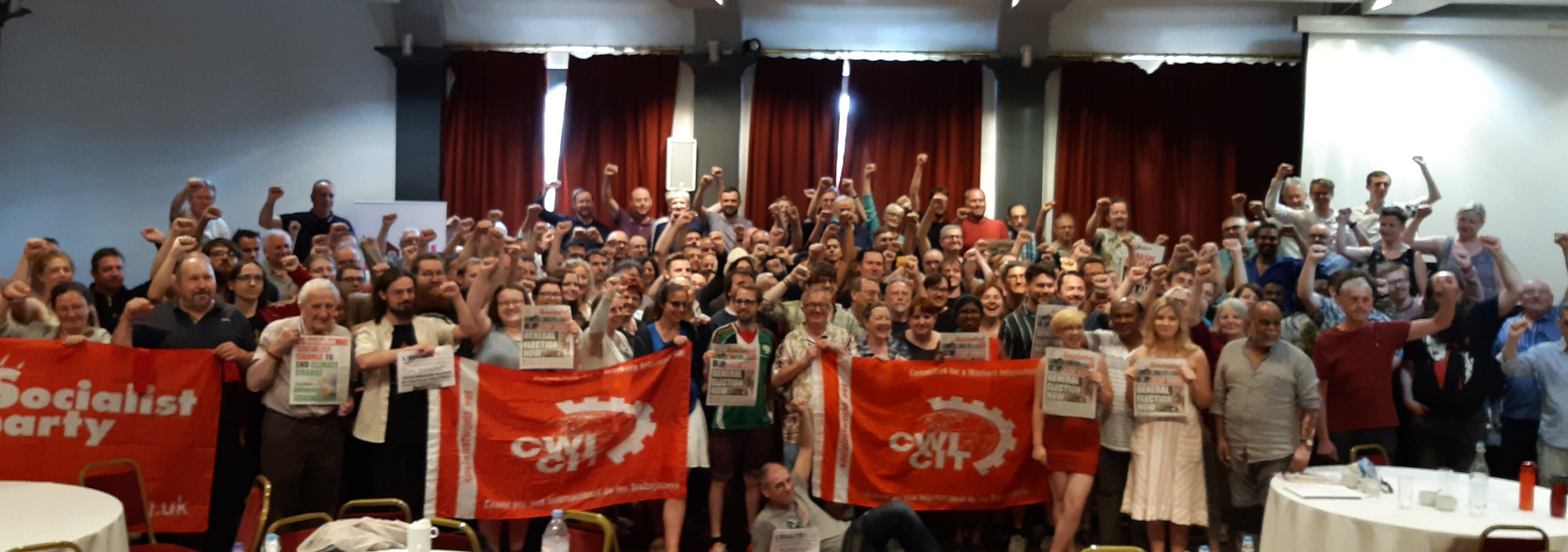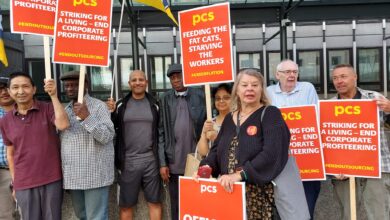Pressure growing on SNP leaders to call indyref 2

By Philip Stott
Nicola Sturgeon, Scotland’s first minister, “reset” – in reality put the brakes on – the issue of a second independence referendum in June 2017. This was a major retreat just three months after the Scottish parliament voted in favour of requesting from Westminster the powers to hold indyref 2. The trigger for the u-turn was the electoral shock suffered by the SNP in the 2017 general election when they lost a third of their MPs and half a million votes.
Sturgeon admitted last year that “there was no widespread support in Scotland for a second vote on independence before the UK leaves the EU.” Indeed current polling evidence shows support for an immediate second referendum has fallen as low as 20%. She went on to say: “At the end of this period of negotiation with the EU – likely to be around next autumn [2018] – when the terms of Brexit will be clearer, we will come back to parliament to set out our judgment on the best way forward at that time, including our view on the precise timescale for offering people a choice over the country’s future.”
So, will the Scottish government table demands for a second independence referendum later this year once the detail of Brexit becomes known? The window to do so is limited. In reality the timescale for any Scottish parliament decision would most likely be late 2018 or the first half of 2019 – the UK is due to leave the EU in March 2019.
The next elections to the Scottish parliament will take place in May 2021. There is a real fear among SNP strategists that if they lost even a half a dozen MSPs there will no longer be a pro-independence majority at Holyrood. As it is the current SNP minority administration needs support from the Greens for the Scottish budget and a vote for a second referendum.
clashes
It is therefore possible that the Scottish government could, later this year or early in 2019, retable indyref 2. The crisis in the Tory party over Brexit, the ongoing one-sided civil war in the Labour Party being conducted by its pro-capitalist wing against Corbyn, and the fear of losing a pro-independence majority in 2021 could prove to be a tipping point.
Timing is important. An early Westminster general election has the potential to be a nightmare for the SNP. A further loss of MPs, especially to Corbyn in Scotland, could weaken the Sturgeon leadership significantly. For this reason there has been a deafening silence from leading SNP figures demanding May resign and a general election be called.
Ironically, Labour’s completely mistaken policy on Scotland and the national question can still provide a get out of jail free card for the SNP leadership. Sturgeon will use Labour’s current policy of outright opposition to independence and a second referendum as a stick to beat Labour with. This approach must be urgently changed by Corbyn, Richard Leonard and the Labour left.
As a minimum, Corbyn and Leonard must make clear that they defend the right of the Scottish people to self-determination and will call on their MSPs and MPs to not oppose the calling of an independence referendum. Additionally, a conference of the trade union, labour and socialist movement should be organised to work out a class and socialist policy towards a new referendum.
It is likely that if the Scottish parliament backed a vote for a new independence referendum it would be refused by the May government. With support for independence holding firm at 45% it would be a huge gamble for a weak Tory government to allow a referendum to go ahead. Westminster still holds a veto over whether a “binding” referendum can take place.
While Sturgeon et al would use this to their advantage there would also be immediate demands on the SNP to do a “Catalonia”. That is to organise a referendum in defiance of Westminster’s refusal to allow a section 30 order (this transfers the power to hold a referendum from Westminster to Holyrood). This is something that Sturgeon wants to avoid. Socialist Party Scotland would call for mass protests, school and college strikes, workplace strike action and a mass mobilisation of the workers’ movement to fight for the right to a referendum and for an independent socialist Scotland.
pressure
Among many SNP activists and grassroots pro-independence campaigners there is an increasing urgency to push Nicola Sturgeon into naming a referendum date. The large demonstration in Glasgow recently of around 50,000 independence campaigners – a march neither supported or promoted by the SNP leaders – reflected a growing demand on Sturgeon to act. (see report below)
The current SNP deputy leadership contest has become focused almost entirely on this issue. Two of the three candidates vying for the position are demanding that the “triple lock” justifies a referendum prior to the next Holyrood election. The “triple lock” is the majority vote in 2016 to stay in the EU, the vote in favour of a referendum by the Scottish parliament in March 2017 and the majority 35 SNP MPs elected in the June 2017 Westminster elections out of a total of 59 from Scotland. The other candidate, Scottish minister Keith Brown, has adopted a more cautious approach, refusing to outline a timetable, reflecting the view of Sturgeon and the SNP leadership.
The SNP has seen its electoral base eroded, in particular as their pro-capitalist policies have become more glaring. The growing crisis in local government and the NHS, rampant inequality and falling standards of living for the working class are all consequences of SNP politicians – and right wing Labour councillors – implementing Tory austerity.
It has also been necessary for Sturgeon and co to try and counter the loss of electoral support to a Corbyn-led Labour Party, albeit still limited, among working class supporters. At the same time, the Tories in Scotland have also made gains at the expense of the SNP in the rural and middle class areas where opposition to independence and a second referendum is highest.
The dilemma for the SNP is that the Brexit referendum has not resulted in any overall increase in support for independence, despite the 62% to 38% majority in Scotland to stay in the EU. In part, this is because an estimated 400,000 independence supporters voted for Brexit in 2016. The SNP’s support for the bosses’ EU was also reflected in their refusal to recognise an independent Catalonia following the referendum of 1stOctober 2017. And their craven approach towards the EU’s issuing of a European Arrest Warrant for Clara Ponsati, the former Catalan education minister who currently lives and works in Scotland.
Combined, these factors have complicated the terrain for the SNP leadership. Opposition to austerity in words but not at all in deeds has led to many workers and young people becoming more critical of the SNP. A space has opened to the left of a party that was, at least after the 2014 indyref, seen as a radical, anti-austerity alternative.
As Socialist Party Scotland predicted however, the actions of the SNP in power, their insistence of working within the limits of what capitalism can afford, is exposing them.
diversion
With an eye on the ticking clock towards 2021, SNP leaders are increasingly attempting to use the national question to shore up their weakening support. In part, this is reflected in the issues around the EU Withdrawal Bill that is currently being debated at Westminster.
The Scottish government have, rightly, demanded that all competences (powers) in devolved areas being returned from the EU after Brexit come to Holyrood. However, the Tories want to retain 24 areas at Westminster – mainly covering agriculture, fisheries and the environment – for at least seven years.
Nicola Sturgeon commented: “There is an issue of principle at stake that we won’t compromise on because if we did we would allow Westminster to exercise a power grab on the responsibilities of the Scottish Parliament and I don’t think any first minister worth their salt should agree to that.”
In reality, SNP ministers are prepared to agree to these competences being reserved to Westminster as long as the Scottish parliament can give or withhold consent to UK legislation in these areas. Nor have they ever complained about anti-working class and pro-privatisation powers being exercised by the EU for decades.
The Scottish and Westminster governments are preparing to do battle in the UK Supreme Court on these issues. Sturgeon’s bellicose stance contrasts markedly with the Scottish government’s own meek implementation of Westminster austerity.
socialism
However, fear of opening the floodgates to a mass movement that challenges the interests of capitalism and gets out of the control of the SNP leadership can stay their hand on indyref 2. In addition, the mood in favour of independence has also cooled as the SNP have failed to live up to their self-appointed “anti-austerity” image. Their pro-capitalist policies cannot answer the doubts and hesitations of many workers who are unconvinced by Sturgeon’s vision of an independent capitalist Scotland.
Increasingly workers are having to go into struggle against cuts-making SNP politicians, as the struggles by council workers in Dundee, West Dunbartonshire and the pay battle of Scottish teachers underlines. We live in volatile times. If the SNP leadership fire the starting gun on indyref 2 an explosive situation could open up.
The need for a mass trade union and socialist led campaign to fight for an independent socialist Scotland that ends all cuts, for public ownership and democratic working class control of the economy would be vital. This would need to be linked to a voluntary, democratic socialist confederation with England, Wales, Ireland and a socialist Europe to end the misery of capitalism for good.
Tens of thousands march for independence
Matt Dobson reports
Over 50,000 people marched through Glasgow on May 5th for Scottish independence. The “All Under One Banner” march, organised by a coalition of Yes and pro independence groups, ended with a mass rally which swelled the numbers further at Glasgow Green. Banners showed a turnout from YES and independence groups from far and wide, from Ayrshire to Aberdeenshire.
This was mainly a working class turnout, significant as there had been no official call from the SNP leadership for a mobilisation. The mainstream media gave the event scant attention. From talking to participants, the turnout came from social media and, critically, discussions in workplaces and communities on the need to keep the issue of independence and a second referendum to the fore of politics.
It’s clear, as this demonstration showed, there is a layer of combative working class and young people who still see the demand of independence as an escape route out of austerity and the most immediate and viable way of forcing social change.
The experience of 2014 and the mass politicisation of a section of the working class in conflict with the establishment was profound. Socialist Party Scotland spoke to many who had attended the Hope Over Fear – Socialist Case for Independence meetings and rallies, which we participated in, with Tommy Sheridan which over the course of 2014 also mobilised tens of thousands.
The 5th May showed the still explosive nature of the national question, despite the recent ebbing of the mood recently. This turnout came as a surprise to the Scottish media commentators. The SNP suffered losses at the 2017 general election and the Sturgeon leadership has retreated on the question of indyref 2. But a significant mood exists to push the SNP on this question to “use the mandate” and in reality open up another confrontation with the British capitalist class.
Most of the banners placards and signs were around the demand for a second referendum and also directed at ” ending Tory rule”.
There were a significant number of EU flags, reflecting false illusions reinforced by the SNP leadership. But we also spoke to many who agreed with our analysis of the EU being a neo bosses’ club. The visible support for Catalonia was large in terms of visible flags.
Hundreds signed our petition calling for an end to state repression in Catalonia, support for the student general strikes and for a socialist republic.
We also got a very good reception on the issue of a £10 an hour minimum wage and supporting the recent McDonald’s strikes.
Discussions on austerity such as council cuts and the NHS were more difficult as this is seen as a direct criticism of the SNP and their role in implementing austerity.
There was virtually no official SNP presence on the demonstration, apart from a handful of rally speakers. However, many who signed our petitions wore SNP badges and were among the 80,000 new members who joined the SNP after the 2014 referendum.
We spoke to a few people about Corbyn and the discussions showed the results of the Labour left’s disastrous position on the national question and other weaknesses. ” I would support him if he supported us on another referendum”. ” Corbyn will help working class people in England, I fully support them. For us, it’s independence to get away from the Tories”. Abolition of Trident, on which Corbyn compromised with the Blairites in the 2017 general election manifesto, was also a major part of the demonstration.



